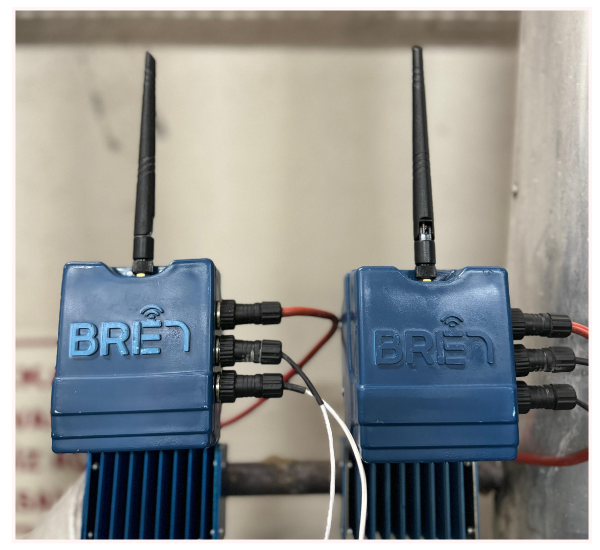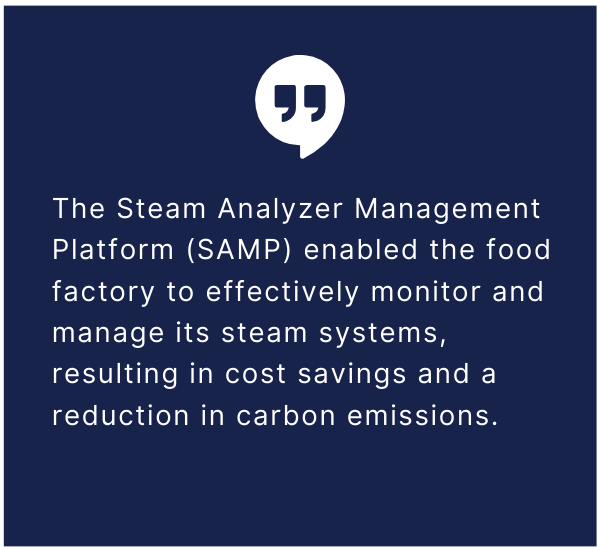Food Factory Steam Monitoring and Savings Study

Challenge
 In a food production and processing plant, the goal was to determine the cost per product of steam and improve efficiency. However, existing measurement systems did not provide sufficient information on process and machine-based utilization. In addition, there was no accurate determination of how much of the steam produced was consumed and how much was leakage.
In a food production and processing plant, the goal was to determine the cost per product of steam and improve efficiency. However, existing measurement systems did not provide sufficient information on process and machine-based utilization. In addition, there was no accurate determination of how much of the steam produced was consumed and how much was leakage.
Identifying leaks was a more challenging process than responding to leaks. In order to detect leaks, all lines had to be walked manually and measured one by one at certain intervals. However, during these measurements, situations such as the lines not working or not working at full capacity made it difficult to detect faults.There was a risk that the innovations to be made would affect production continuity due to downtime, cooling time and the need for revision. Therefore, measurement systems had to be approached with caution.
Solution

When they heard about Brenpower's solution to all these problems, they knew immediately that they had to have it in all of their facilities. Plant management called in their experts, conducted an audit and quickly integrated 255 monitors into the system. These monitors were securely and quickly connected to steam traps, valves and main lines. Temperature sensors were accurately placed at the inlet and outlet of the steam traps and at two points on the main lines. The machine learning process began to monitor the instantaneous steam flows in the steam traps and valves. This process, which took three to four weeks, enabled the systems to complete the learning phase. When reports of leaks were received, the steam traps were inspected and replaced to prevent steam leaks.
 Benefits
Benefits
- Steam Analyzer Management Platform (SAMP) enabled end-to-end monitoring of steam lines.
- The amount of steam used at each machine inlet was clearly seen.
- The amount of steam passing through production points and main lines was monitored.
- Steam monitoring without system revisions and without stopping production was advantageous.
- The device saved battery costs by generating its own energy from the heat in the line.
- Predictive maintenance was performed by reporting instant failures in steam traps.